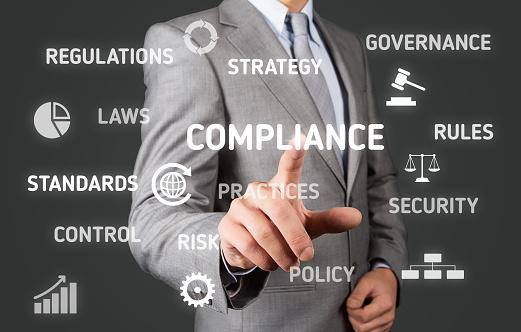In the intricate tapestry of global finance, where trillions of dollars flow seamlessly across borders, the guardians of integrity stand vigilant, ensuring that the river of commerce remains untainted. Welcome to the world of Anti-Money Laundering (AML) and Know Your Customer (KYC) protocols—two formidable pillars that uphold the sanctity of financial compliance. As financial landscapes evolve with unprecedented speed, driven by technological innovation and globalization, the importance of understanding AML and KYC has never been more paramount. These mechanisms not only serve as the first line of defense against illicit activities but also embody the ethical backbone of financial institutions worldwide. Join us as we delve into the profound role these frameworks play in safeguarding the financial ecosystem, ensuring that trust, transparency, and accountability remain the cornerstones of modern commerce.
Decoding the Intricacies of AML and KYC in Modern Finance
In the labyrinthine world of modern finance, Anti-Money Laundering (AML) and Know Your Customer (KYC) processes stand as vigilant sentinels, guarding against illicit financial activities. These regulatory frameworks are not merely bureaucratic hurdles but are pivotal in safeguarding the integrity of financial systems worldwide. AML and KYC initiatives work hand in hand to ensure that financial institutions can identify and mitigate risks associated with money laundering and terrorist financing. They require a comprehensive understanding of client identities and transactional behaviors, making them essential tools in the arsenal of financial compliance.
- Risk Assessment: Institutions must evaluate potential risks posed by clients, transactions, and geographic locations.
- Customer Identification: Rigorous processes are in place to verify the identity of clients, ensuring they are who they claim to be.
- Transaction Monitoring: Continuous scrutiny of financial transactions helps detect and report suspicious activities.
- Record Keeping: Detailed records are maintained to provide a clear audit trail for regulatory reviews.
By integrating these practices, financial entities not only comply with regulations but also foster a culture of transparency and trust. The intricate dance between AML and KYC is a testament to the dynamic nature of financial compliance, adapting to new challenges and technologies in an ever-evolving landscape.

Unveiling the Impact of Compliance Measures on Financial Integrity
In the intricate world of finance, the twin pillars of Anti-Money Laundering (AML) and Know Your Customer (KYC) serve as critical guardians of financial integrity. These compliance measures are not mere regulatory checkboxes but are essential components that ensure the health and transparency of financial systems. By implementing robust AML and KYC protocols, financial institutions can effectively deter illicit activities, such as money laundering and fraud, which threaten the stability of global markets. This vigilance not only protects the institutions themselves but also safeguards the broader economy from the corrosive effects of financial crime.
- AML: This set of procedures, laws, and regulations is designed to stop the practice of generating income through illegal actions.
- KYC: A vital process for verifying the identity of clients, ensuring that financial entities know who they are dealing with.
Incorporating these measures involves a delicate balance of technology and human oversight. Advanced data analytics and AI are increasingly employed to enhance the effectiveness of AML and KYC processes, enabling institutions to identify suspicious activities with greater precision. Yet, the human element remains indispensable, as trained professionals interpret data insights and make informed decisions. Together, these elements create a formidable defense against financial malfeasance, fostering a secure and trustworthy financial environment.

Strategic Approaches to Strengthening AML and KYC Frameworks
To effectively bolster Anti-Money Laundering (AML) and Know Your Customer (KYC) frameworks, financial institutions must adopt a multifaceted strategy that addresses both technological and human elements. Technology integration is paramount; leveraging artificial intelligence and machine learning can enhance the detection of suspicious activities by identifying patterns that may elude human analysts. Furthermore, data analytics can be employed to streamline the customer onboarding process, ensuring compliance without sacrificing user experience. Embracing these technologies not only improves efficiency but also provides a robust defense against financial crimes.
Equally important is the continuous training and development of personnel. Financial institutions should invest in regular training programs to keep their teams abreast of the latest regulatory changes and emerging threats. Additionally, fostering a culture of compliance within the organization is crucial. This can be achieved by:
- Encouraging open communication and reporting of suspicious activities.
- Implementing clear policies and procedures that are consistently enforced.
- Providing incentives for employees who demonstrate exemplary compliance practices.
By harmonizing advanced technology with a well-informed workforce, financial institutions can create a resilient AML and KYC framework that not only meets regulatory requirements but also safeguards the integrity of the financial system.
Expert Recommendations for Enhancing Compliance Efficiency
In the ever-evolving landscape of financial compliance, leveraging expert strategies can significantly boost the efficiency of Anti-Money Laundering (AML) and Know Your Customer (KYC) processes. One effective approach is to integrate advanced technologies such as artificial intelligence and machine learning, which can automate data analysis and enhance the accuracy of risk assessments. These technologies not only streamline operations but also enable financial institutions to stay ahead of emerging threats by identifying suspicious activities in real-time.
Furthermore, adopting a holistic compliance culture is essential. This involves:
- Regular training programs for staff to keep them updated on the latest regulatory changes and compliance best practices.
- Implementing robust internal controls that ensure all compliance measures are consistently applied across the organization.
- Encouraging a proactive approach where employees are empowered to report potential compliance issues without fear of retaliation.
By embracing these expert recommendations, financial institutions can not only enhance their compliance efficiency but also build a resilient framework that supports sustainable growth and trust.





